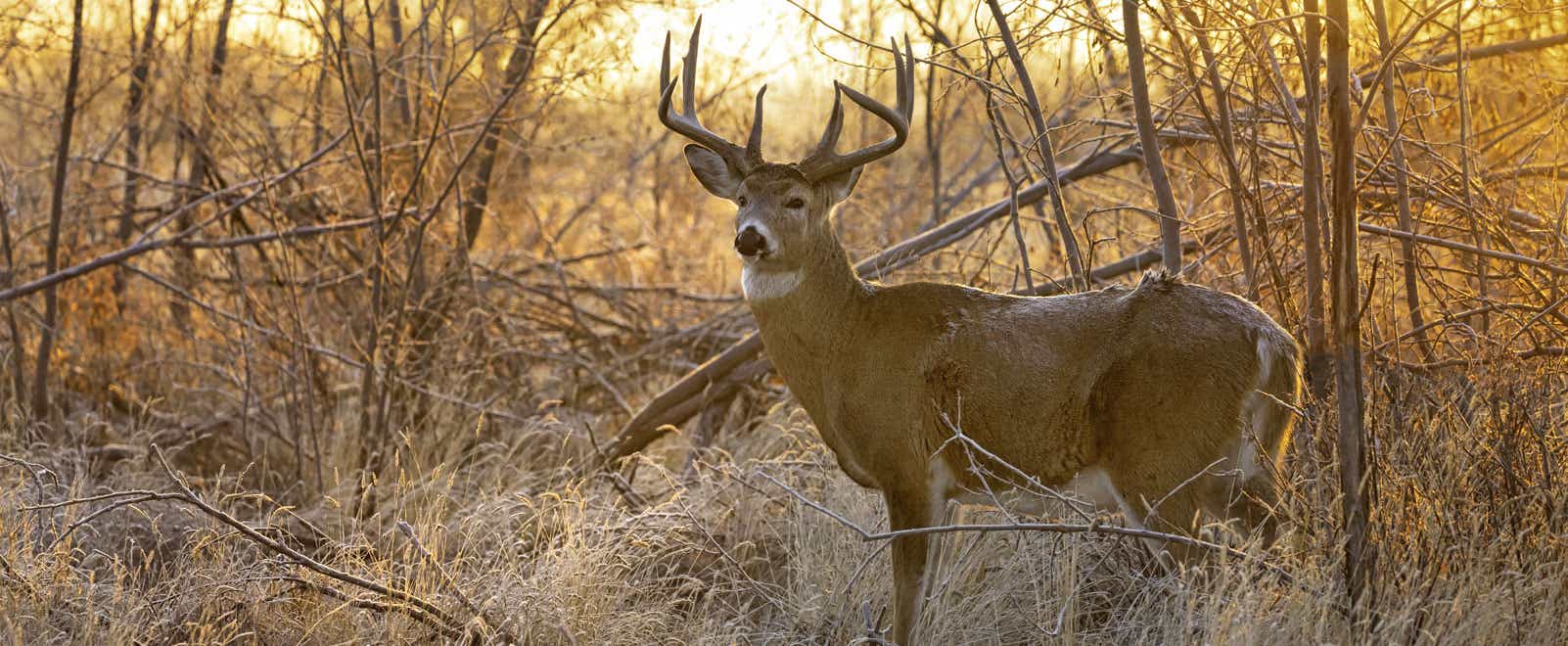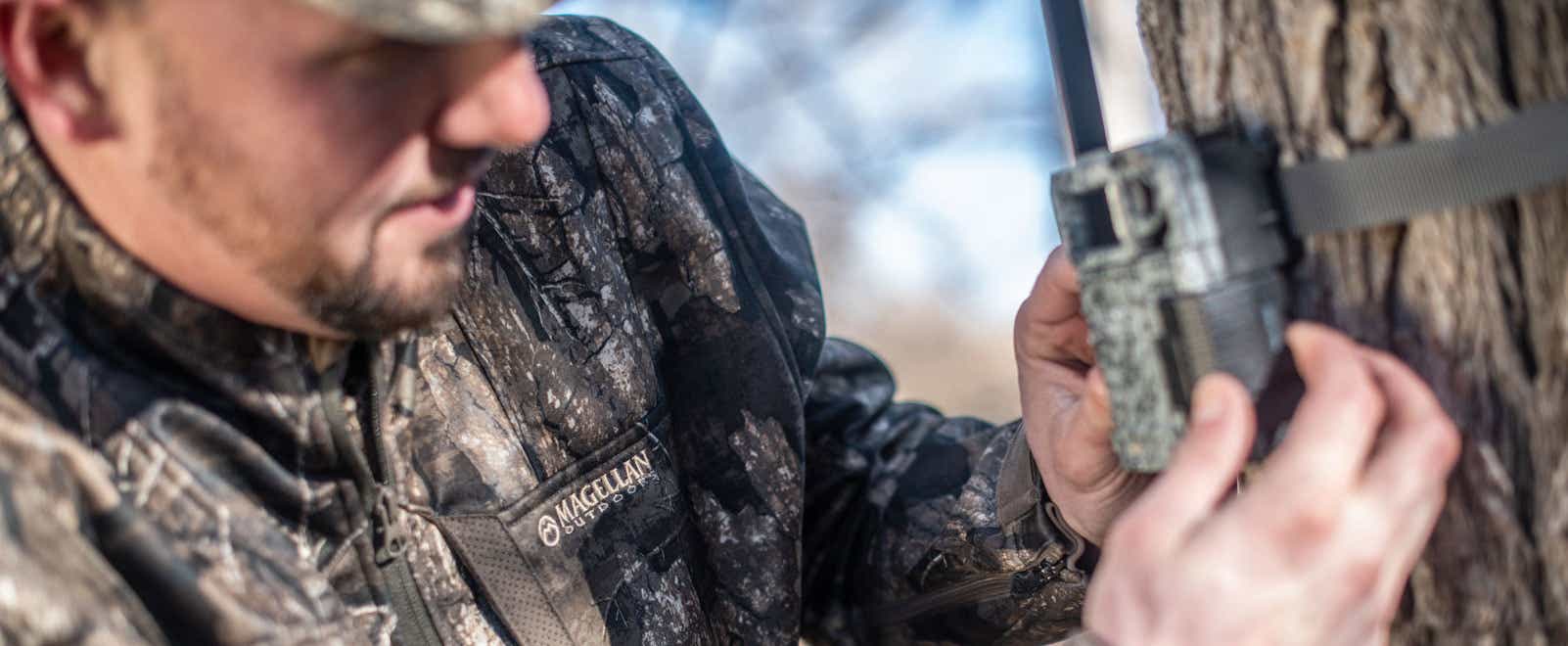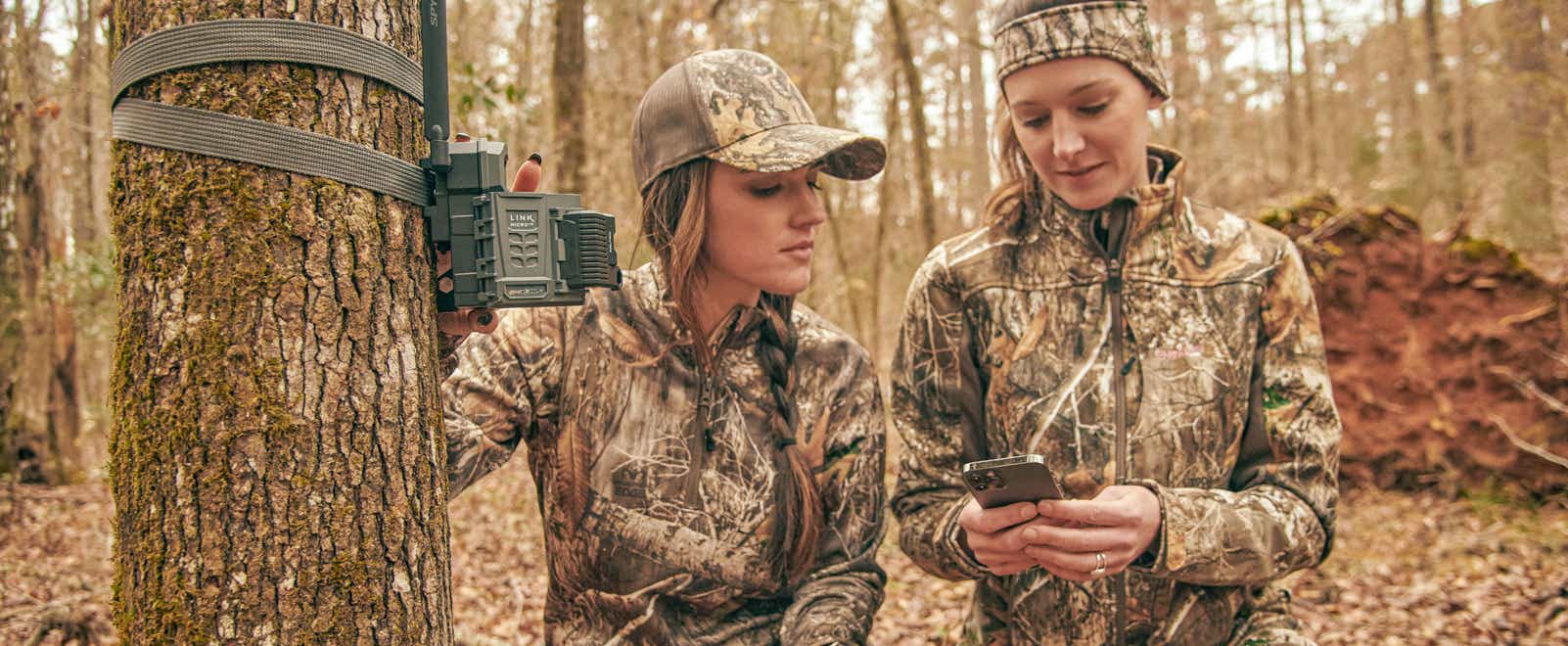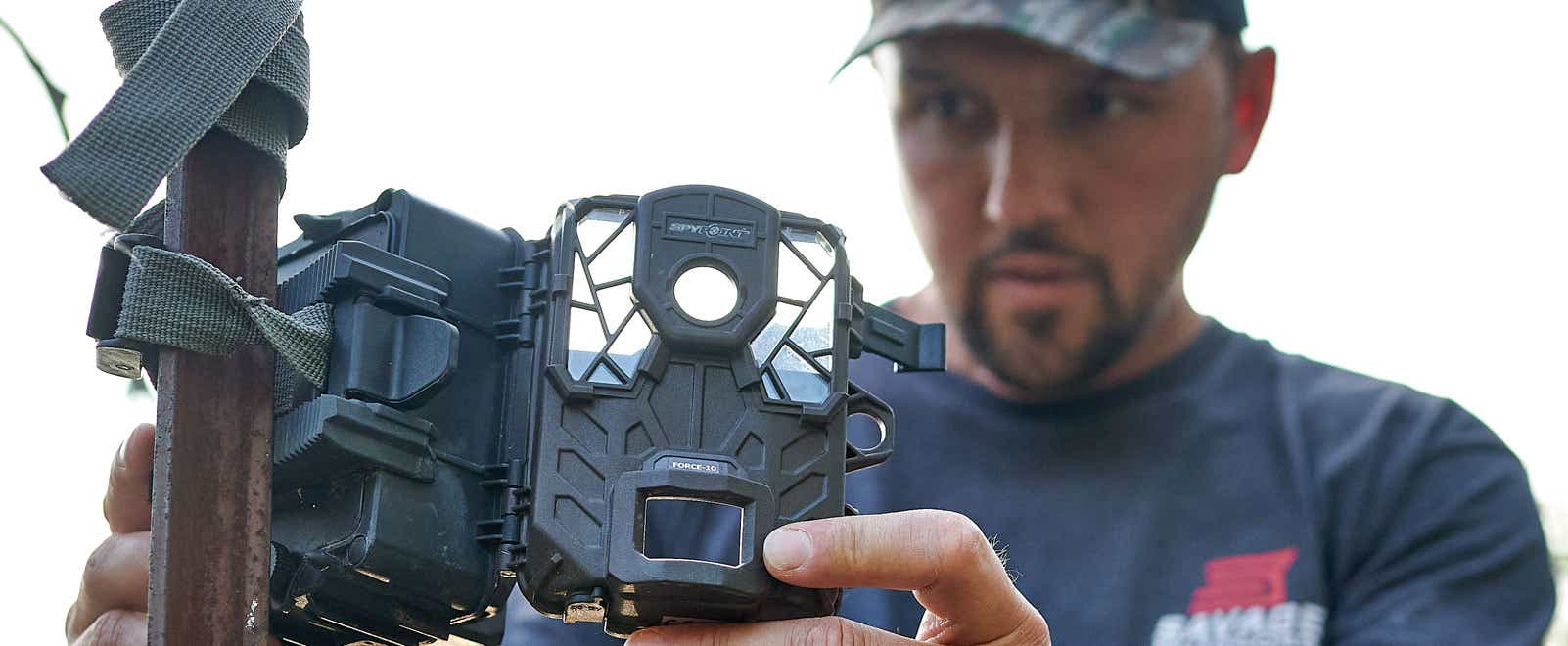Game Camera Buying Guide

How to Have Deer Hunting Scouting Success
Gearing up for the start of a hunt is an exciting process. One of the most important aspects of preparing for the hunt is scouting nearby wildlife.
Whether you’re on the lookout for deer, turkeys, or other game, gaining critical knowledge of typical behavior and feeding locations can give you an edge even before you’re out in the field. The photos and videos captured by game cameras, or trail cameras, can give you a wealth of information about the wildlife roaming, especially deer activity, in local hot spots day and night.
If you’ve scanned the game cameras at Academy Sports + Outdoors, it’s likely you’ve noticed the wealth of technological features available. Below, we’ve outlined the most essential features you should consider before you buy a game camera.

Game Camera Image Resolution
Image resolution quality depends on how many megapixels the trail camera offers. Most game cameras are in the range of 10 to 20 megapixels such as the Stealth Cam QS Series 20 Kit Combo Trail Camera. With a trail camera that offers more megapixels, you’ll enjoy higher-resolution photos with clear, crisp details.
While image resolution is not the bottom line when it comes to game camera quality, having detailed, life-like photos to rely on can really come in handy. You won’t spend time trying to identify ambiguous shapes through tree branches, leaves, and shadows.
Most game cameras also offer video capability with varying image quality. Videos can help you get a better understanding of an animal’s speed and natural movement patterns, providing more details than photos alone can offer.
With video, it’s best to look for models that offer at least 720p high-definition quality, and 1080p is optimal. A few models even offer Ultra High Definition 4K technology that captures stunning, life-like videos of roaming wildlife.
Illumination Range
One of the main jobs of trail cameras is to effectively illuminate and capture images of wild game located far off in the distance since most wildlife won’t conveniently stroll right in front of the lens. This task is especially important because game is usually most active between dawn and dusk when natural light is at a minimum. If you’re placing your game camera near a wide-open clearing, rather than a thickly wooded area, a long illumination range will assist in capturing images of animals hiding in the distance.
Most game cameras offer an illumination range between 50 feet and 120 feet. Illumination range can also depend on the farthest distance at which the camera can detect movement, known as detection range.
EXPERT TIP:
Choose a camera that offers an illumination range that is at least equal to the detection range. For example, even if the camera detects an animal at 100 feet, it won’t be able to photograph it through the dark with an illumination range of only 70 feet.
Flash Type
When you’re out in the field, trying to remain as silent and invisible as possible while you set your sights on a nearby buck, you know how even the slightest disturbance can send an animal running off in the opposite direction.
To capture night-time shots of skittish game, trail cameras need to harness subtle illumination technology that won’t alert an animal to its presence, rather than traditional flashes that are bright and obvious.
Infrared flash technology is ideal for capturing crisp photos of wild game at night with the least amount of visible light possible. The best option to avoid spooking game is “no-glow flash,” which utilizes LEDs for a flash that is not only undetectable to animals passing by but humans also.
Trigger Speed and Shutter Speed
If you’re relatively new to scouting efforts, trigger speed might be a game camera feature you’re less familiar with. Since game cameras rely on motion sensing to know when to snap a photo, the amount of time between motion detection and an image being taken, or trigger speed, is important to your scouting efforts. After all, a photo of a buck’s rack is much more helpful than a photo showing only his tail.
However, you should consider the placement of your camera when evaluating how fast the trigger speed needs to be. Trigger speed is more crucial for game cameras that are set up along a game trail than cameras that are aimed at a bait station or a food plot.
Generally, the faster movement you expect from nearby animals based on location, the faster the trigger speed should be. Most game cameras offer a trigger speed that ranges from less than 0.5 seconds to longer than 1 second.
Shutter speed refers to the amount of time that the camera’s digital sensor if exposed to the light when capturing an image. The brighter the ambient light, the faster the camera’s shutter speed will be to avoid overexposure.
Unfortunately, because nighttime photos lack sufficient exterior ambient light for crisp images – coupled with the infrared flashes that avoid spooking game, but don’t provide the same robust lighting effects as traditional flashes – this could potentially result in blurry nighttime images.
Here are some ways to reduce blurry game trail camera images at
night:
- For areas with more moving targets, use a camera with multiple flash settings, including blur reduction for a brighter flash
- Use your camera’s multi-shot mode
- Keep the camera in its video mode; this eliminates motion blur because there is no stoppage of action
Cellular Trail Cameras

Cellular trail cameras, or cell cams, have been revolutionizing the industry. Cellular game camera technology benefits include:
- 24/7 Access to your captured images through a cellular network and delivered in real-time
- Most trail cameras offer mobile app integration for easy use
- Less pressure and disruption on your spots because of increased range from your camera site; there’s no need to get within w-fi or radio signal range to receive photos
- Less back-and-forth travel time to the lease
- Reduced lag time for information exchange makes for easier scouting adjustments or strategy refinement
Shop Cellular Trail Cameras at Academy Sports + Outdoors
Other Trail Camera Features to Consider
- Battery Life - Game cameras use a range of battery types. Frequent charges or changes could be time-consuming, depending on where your camera is located.
- Memory - Compatibility with removable memory cards can help you capture more images and videos before the memory is full, and higher-resolution cameras may use memory up more quickly than others.
- Remote access to images - With wireless connectivity, some cameras can send images and videos to your smart device for remote viewing.
- Built-in LCD screen - It can be helpful to view images while out in the field so you can adjust the camera’s height or angle if needed.
- Camouflage - Many cameras feature camouflage-print patterns that help them blend in with the surrounding landscape.
- Security - If your camera is going to be placed on public land, it’s worthwhile to consider a lockable feature.
- Operating noise - Some cameras feature quiet or silent operation that helps the camera remain undetected by wild game.
- Exposure control - Long or short exposure can help you achieve better images of animals both near and far.
- Information stamps - When capturing images, some cameras imprint the date, time, temperature, and moon phase to help you identify patterns in behavior.
- Photo settings - Adjustable settings like burst or multi-shot mode and time-lapse mode let you customize your game camera strategy.
- SD Cards - For most cameras, you’ll want to consider using a Class 10 SDHC card between 4GB and 32GB in size.

Game cameras have become increasingly popular in recent years, but that doesn’t mean all are created equal – the various technologies and features available let you get the most out of your purchase if you consider each carefully.
As you’re building your treasure trove of game camera photos, let Academy Sports + Outdoors round out your repertoire of scouting and preparation tools before your next hunt. Shop for hunting essentials, such as feeders, attractants, high-quality hunting boots and camo clothing to enjoy your best hunting trip yet.